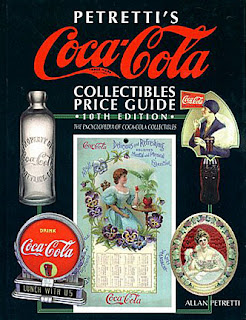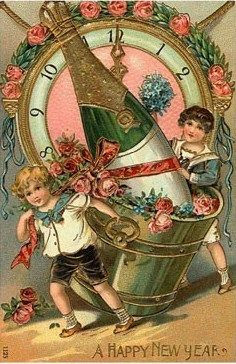 QUESTION: Several years ago, I began collecting advertising items made for Coca Cola. I have several calendars, stuffed animals, and matchbooks. They seem to be everywhere, so it wasn’t hard to begin collecting them. Recently, I purchased a serving tray, supposedly dating from the 1930s, with a woman in a yellow swimsuit holding a bottle of Coca Cola at a local antique show which features mostly lower to middle priced late antiques and collectibles for sale. This was the most expensive Coca Cola piece I had yet purchased, so I was a bit hesitant at first. But the dealer assured me that it was authentic. Considering its age, I was surprised how bright and crisp the colors were, but I just assumed it had been used very little. How can I tell if the tray is authentic?
QUESTION: Several years ago, I began collecting advertising items made for Coca Cola. I have several calendars, stuffed animals, and matchbooks. They seem to be everywhere, so it wasn’t hard to begin collecting them. Recently, I purchased a serving tray, supposedly dating from the 1930s, with a woman in a yellow swimsuit holding a bottle of Coca Cola at a local antique show which features mostly lower to middle priced late antiques and collectibles for sale. This was the most expensive Coca Cola piece I had yet purchased, so I was a bit hesitant at first. But the dealer assured me that it was authentic. Considering its age, I was surprised how bright and crisp the colors were, but I just assumed it had been used very little. How can I tell if the tray is authentic?
ANSWER: Because Coca Cola has been around for over 130 years, there’s a huge number of collectible items on the market. And with the launching of online auction and sales sites, the number has steadily grown. But this means there’s an even greater chance that some of these items are reproductions or outright fakes.

J
ohn Pemberton, a pharmacist, created Coke syrup in 1886. He convinced a nearby soda fountain in Atlanta to add carbonated water and give it a try. At first the drink was only a modest success, Pemberton and his partner, Frank Robertson, came up with the name Coca-Cola, scripted in a flowing hand by Robertson. That, plus a series of hand-painted banners encouraged passers-by to "Drink Coca-Cola," was the beginning of a successful marketing campaign that lives on to this day. Coca-Cola has used its particular shade of red in its merchandising for more than a century, and its distinctive trademark has remained virtually unchanged from the original.
Coca-Cola has used its particular shade of red in its merchandising for more than a century, and its distinctive trademark has remained virtually unchanged from the original.
 Coca-Cola collectibles can be found at a variety of prices all over the Internet. EBay alone lists over 200,000 collectibles for sale, ranging from original 6.5-ounce glass bottles for 99 cents each to lifetime assortments well into six figures. Restored and working vending machines can cost $10,000 or more. Early porcelain signs and those with original neon enhancements frequently sell for thousands as well. And because of the huge variety of merchandise, many collectors tend to specialize by era, type or size.
Coca-Cola collectibles can be found at a variety of prices all over the Internet. EBay alone lists over 200,000 collectibles for sale, ranging from original 6.5-ounce glass bottles for 99 cents each to lifetime assortments well into six figures. Restored and working vending machines can cost $10,000 or more. Early porcelain signs and those with original neon enhancements frequently sell for thousands as well. And because of the huge variety of merchandise, many collectors tend to specialize by era, type or size.
Even though Pemberton and Robertson founded the company in the late 1890s, collecting Coca-Cola advertising items---beautiful models printed on trays, calendars, signs, and even tiny pocket mirrors—didn’t begin to get popular until the early 20th century. Coca-Cola print advertising onto just about anything and gave these items out at state fairs and schools in towns all across the country.
 Coke’s advertising department placed many of the large, gorgeous cardboards and metal advertisements with store owners and gas stations as temporary promotional displays intended for seasonal use. Many ended in the trash just like those of today. People used signs to patch holes in roofs, line attic walls, or for target practice.
Coke’s advertising department placed many of the large, gorgeous cardboards and metal advertisements with store owners and gas stations as temporary promotional displays intended for seasonal use. Many ended in the trash just like those of today. People used signs to patch holes in roofs, line attic walls, or for target practice.
The overwhelming number of reproductions in this category makes it imperative that collectors learn as much as possible Coca-Cola items. Beginners can learn a lot from price guides and online forums.
 Collectors typically like items produced from the late 1800s to the 1960s. But with so many items on the market, it’s only natural that some will be fake. The difference between a reproduction and a fake is that there never was an original item like the fake. At first, the Coca-Cola Company made it easy to make their reproductions look like the originals produced 50 to 100 years before. For example, the reproduction trays from 1974 had only a small written notice on the rim of the trays to say they were recently made. But savvy sellers could easily remove the notice by scraping it off with a pocket knife.
Collectors typically like items produced from the late 1800s to the 1960s. But with so many items on the market, it’s only natural that some will be fake. The difference between a reproduction and a fake is that there never was an original item like the fake. At first, the Coca-Cola Company made it easy to make their reproductions look like the originals produced 50 to 100 years before. For example, the reproduction trays from 1974 had only a small written notice on the rim of the trays to say they were recently made. But savvy sellers could easily remove the notice by scraping it off with a pocket knife.
Reproduction serving trays from the 1930s have a note on the back saying so. The original had sharper lithography with a dark-colored back while the reproduction trays had less-than-sharp lithography and a light colored back.
 The location of the trademark notification has also varied throughout the years. Early on, the trademark appeared inside the long trailing C in “Coca.” Starting in the 1940s, The company moved it to a position under the entire word “Coca-Cola.” That happened because the Coca-Cola Company lost a court case. The result was the loss of the trademark control over of “Cola” since the trademark notification was only under “Coca,” not under both parts of the logo.
The location of the trademark notification has also varied throughout the years. Early on, the trademark appeared inside the long trailing C in “Coca.” Starting in the 1940s, The company moved it to a position under the entire word “Coca-Cola.” That happened because the Coca-Cola Company lost a court case. The result was the loss of the trademark control over of “Cola” since the trademark notification was only under “Coca,” not under both parts of the logo.
This change was great for collectors who want to date Coca-Cola items as being before 1940 but can lead to many problems for dating items made after 1940. Naturally many novice collectors don’t know the difference and end up paying way too much for items produced more recently.
It’s a good idea for beginning collectors to do research before making an expensive purchase and to consult more than one source for information.
To read more articles on antiques, please visit the Antiques Articles section of my Web site. And to stay up to the minute on antiques and collectibles, please join the over 30,000 readers by following my free online magazine, #TheAntiquesAlmanac. Learn more about the "Pottery Through the Ages" in the 2022 Winter Edition, online now. And to read daily posts about unique objects from the past and their histories, like the #Antiques and More Collection on Facebook.














